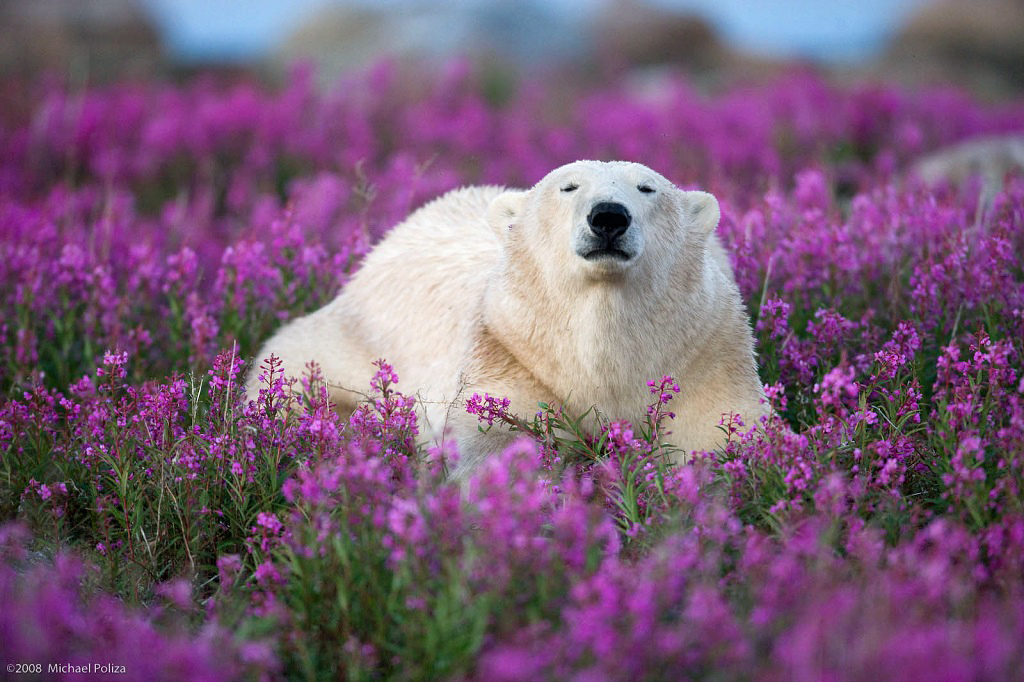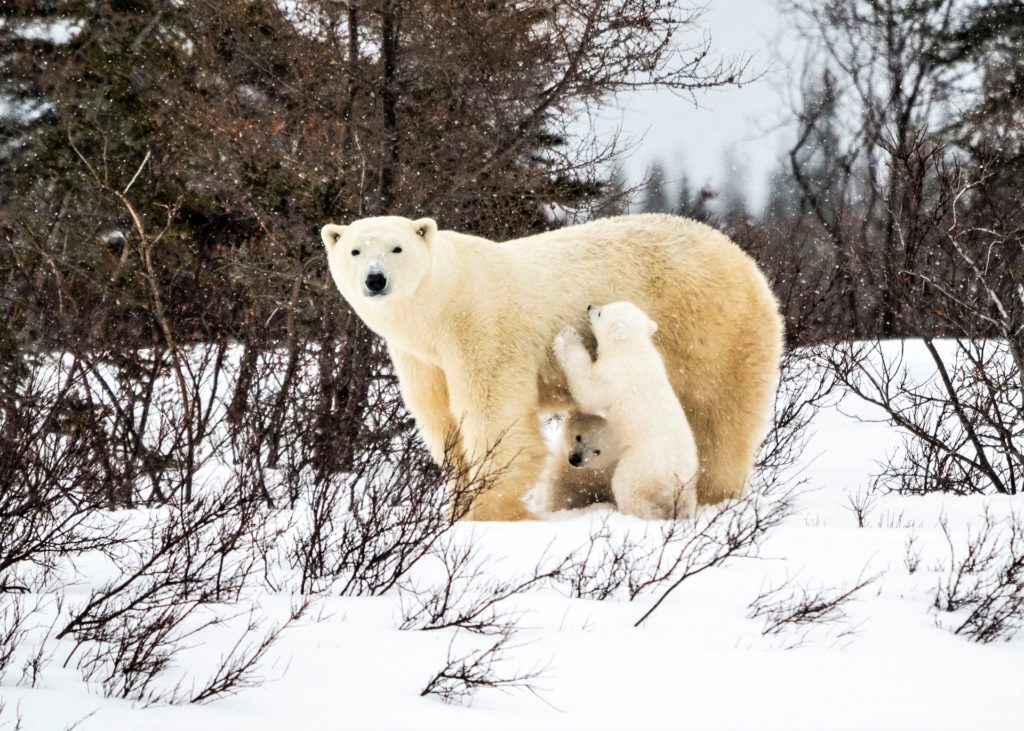Written By George Williams
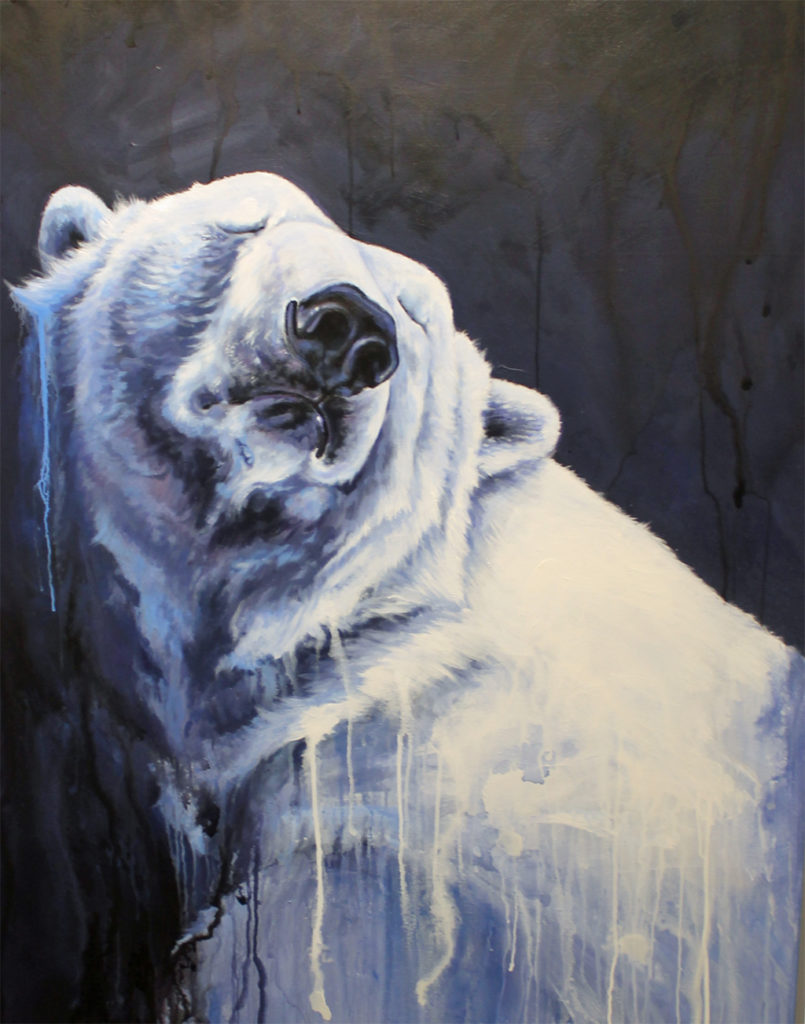
Greta. Acrylic enamel painting by Kal Barteski
“Enjoying the sunbeam, her grace and poise so elegant and glamorous. I could almost feel the warmth of the sun coming off her coat as she melted into the rock day bed.” ~ Kal Barteski
We couldn’t imagine a better image to represent International Polar Bear Day 2022, than the one above taken from a painting by renowned polar bear artist Kal Barteski.
“Greta” appeared in Barteski’s Winnipeg show Polar Bear Polar Bear in 2017 and Barteski also established a Polar Bear Fund in conjunction with the Winnipeg Foundation, which focuses on contributing to innovative, non-invasive polar bear research.
“It’s been a long time coming,” said Barteski on her Web site. “And it is not my idea alone. I live in a province that is home to one of the largest populations of denning mother polar bears. I believe wholeheartedly that this is a responsibility not to be taken lightly. I believe that when mothers, of any creature, are treated with respect and dignity – their children thrive. I also believe that polar bears are a mighty, mighty spirit that should be supported, honoured and cherished.”
People from around the globe celebrate International Polar Bear Day each year by reducing their impact on the environment, while also creating awareness about the impact of the warming climate, especially where it concerns polar bears.
International Polar Bear Day is organized by Polar Bears International. It’s a day when people are asked to reduce their carbon output by doing things such as turning their thermostats down, driving less, using more energy-efficient devices, and simply being kinder to the environment through reducing, reusing and recycling, which is something we’ve been practicing at our Arctic eco-lodges for over 30 years.
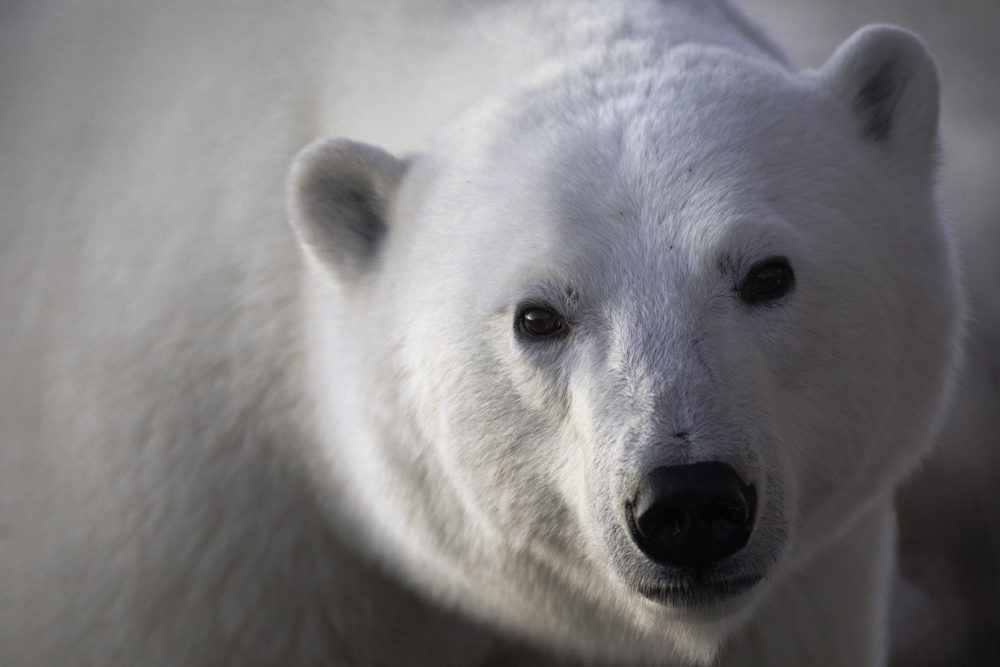
Photo by Robert Postma
There’s no question global warming has had a dramatic influence on the reduction of the Arctic sea ice. A simple search for “arctic ice melting” on YouTube will provide you with numerous satellite images taken over a period of years that clearly show there is substantially less ice in the Arctic now than there was 30 years ago, and it is breaking up much earlier than it did in the past.
This means more open water for steadily longer periods and less time on the ice for the polar bears that depend on the ice to hunt seals, the main component of their diet. Polar bears come ashore when the ice melts, and they do not eat a lot during their time on land. If they come across a beluga whale or caribou carcass, they will indulge themselves, but they do not typically expend much energy pursuing live prey during the summer.
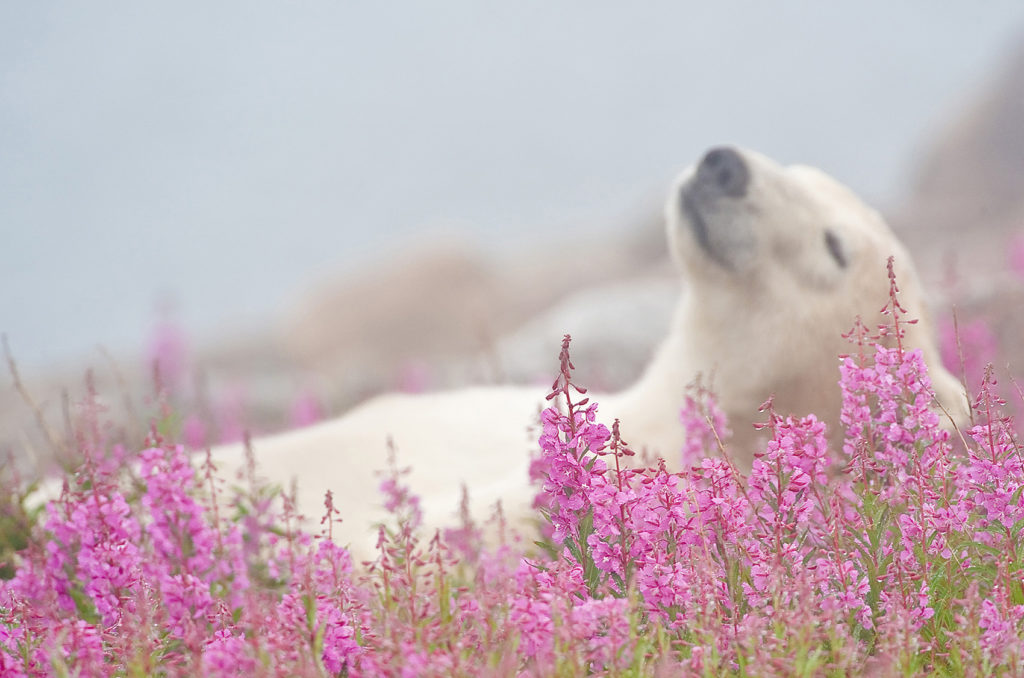
Bear in a bed of fireweed. Photo by Dennis Fast
Polar bears not only need the sea ice to maintain their high dietary requirements, but they also use it for travelling, socializing and finding mates. Some studies indicate that less time on the ice leads to weight loss and physical deterioration in polar bears. Theories that correlate declining polar bear populations with a reduction in sea ice make sense, but we have not personally seen an increase in unhealthy bears around our lodges, nor have we seen a reduction in the number of polar bears that visit us on the Hudson Bay coast from summer through fall.
Theories stating that limiting the use of carbon-based fuels can slow global warming do seem to have some validity, and we do everything we can at our Arctic lodges to minimize our footprint on the environment including:
- Efficient use of solar power
- Strict recycling and composting policies
- Biodegradable cleaning products and in-room toiletries
- Minimum use of motorized vehicles (hence our walking with polar bears adventures!)
- Energy-efficient appliances and lights
- Locally foraged and harvested food whenever possible
- Educating and informing guests about polar bears and their environment
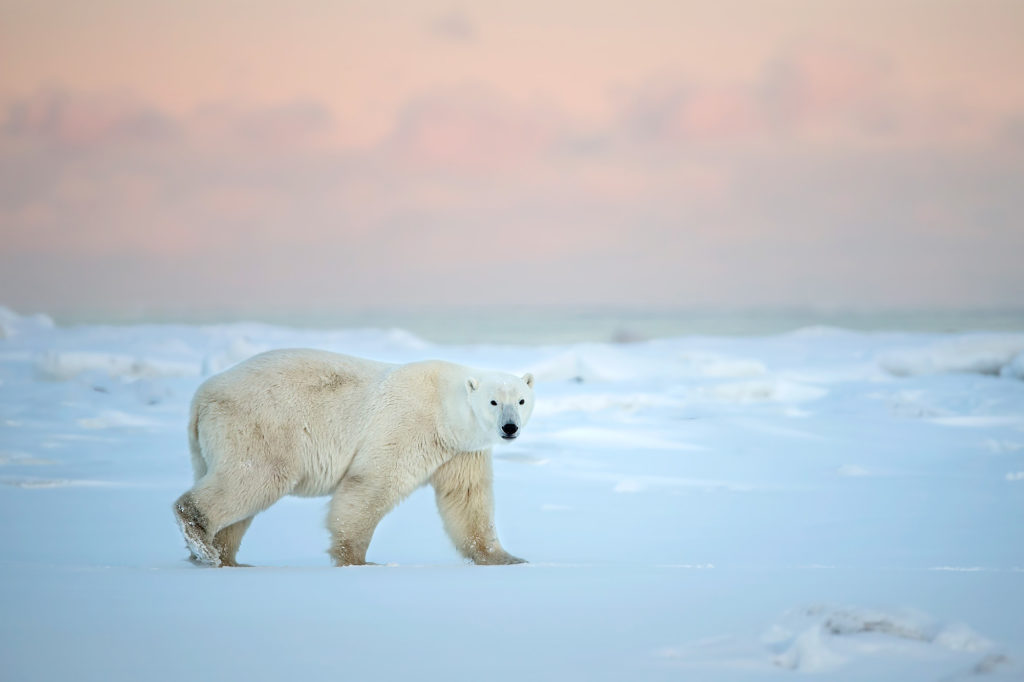
Photo By Fabrizio Moglia
Will our efforts make a difference? Will yours? We think they will, which is why we’ve been practicing the above ever since we began hosting guests in the Arctic. It’s part of our lifestyle now.
Will polar bears become extinct if the sea ice melts completely, or will they adapt and evolve, learning how to hunt efficiently and socialize on land? That’s a decision nature will have to make. Polar bears are magnificent animals. They have helped us for most of our working lives, in one of the most pristine and untouched places on the planet. The very least we can do is be kind to the earth by minimizing our impact on the environment. That’s not only good for the polar bears.
It’s good for all of us.

